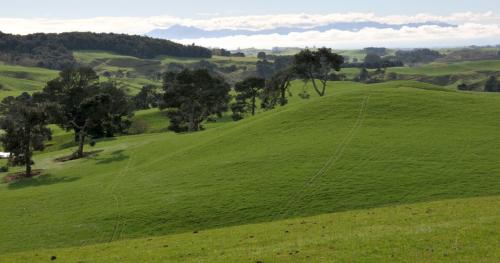Search results
Displaying 171 - 180 results of 1037
- Page… Communication Process • If available, cellular or radio communications are to be used to communicate between the front and back of the mob. Equipment Stock warning signs. Means of communication (if available) e.g. radio or cell phone. High … roads. 2. Confirm the requirements with local regional council for movement on State Highways. 3. Stock warning signs and pilot vehicles must be in place where road traffic has adequate time to stop. Any sign/pilot vehicles must be visible from 3 x the speed limit in metres ahead of and behind stock. Distance from Lead and Tail Pilot Vehicles to stock must be 3 x the speed limit in metres ahead of and …
- External resource… Facilitation learning and change resource …
- … Making sure that our farmers are getting the best value they can for their beef and lamb is not just about maintaining the status quo in our current markets – it’s also about using market innovation to … innovation that is transformational to the New Zealand red meat sector in terms of profitability, sustainability, and confidence. … What is market innovation? Market innovation is the improvement of the mix of target markets and of the way in which these are served. It includes new markets and new distribution processes in foreign and local …
- … In a global context the New Zealand beef and lamb sector is unique, we have an export profile like no other (more than 90 per cent of our sheepmeat and beef goes overseas), we are niche producers (we can only feed 30 million people) and our production is based on natural farming systems. … We know that competition in the meat market is strong and new competitors are emerging. This means that as a sector we need to work harder than anyone else in the world markets – we need to know our consumers better than anyone else. Gathering market intelligence and understanding our consumers As a sector gathering intelligence on the major food trends around the world, …
- Page… Learn about how different farm systems and policies set up different levels of risk – both for worm challenge, and for drench resistance. We also highlight some management ideas and risk mitigations. Good nutrition is #1 No matter what systems are in place on a farm, very good nutrition greatly … Cattle system or policy The tables below show you the risks, along with suggested mitigations, for worm challenge, and drench resistance in different farm systems. … Cattle farming systems and worms …
- Page… Identify and remove dead stock as soon as possible to prevent contamination of pasture and possible transmission of disease … weren’t aware of. Appropriate disposal of the carcasses is important – preferably in a fenced area away from livestock and scavenging animals such as dogs. Consider how you dispose of waste from calf pens, stockyards, and woolsheds – especially if sick animals have been present. … Animal waste and carcass management …
- … Additional freshwater consultations – low-slope map changes, freshwater farm plans, intensive winter grazing changes, and wetlands. This page contains information about consultations, announced by the Government in July and August 2021, as part of the Essential Freshwater work programme. Public feedback is being sought on a range of proposed changes and approaches. We’ll keep this page updated. … published our submissions below – including an additional one on the wetlands regulations that closed 10 July 2022 – and you can still view the resources we created for your information. The freshwater-related consultations are: changes to …
